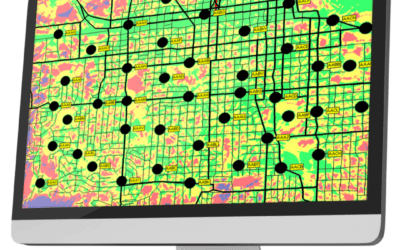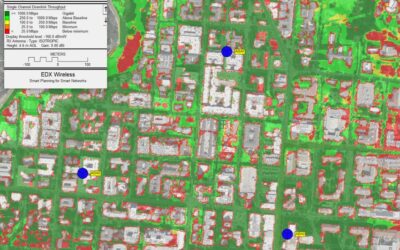
Creating a reliable and scalable wireless network hinges significantly on meticulous planning and accurate data. Among the essential tools in this process is an RF (Radio Frequency) Planning tool, coupled with precise map data. Here’s why these components are crucial:
Precision in Planning
An RF Planning tool allows engineers to simulate how radio signals propagate within a specific environment. This simulation considers various factors such as terrain, building materials, and existing radio interference. Accurate map data is indispensable here, as it provides detailed information about geographical features, building layouts, and land usage. By overlaying this data onto the RF planning tool, engineers can predict signal strength, identify potential dead zones, and optimize antenna placement for maximum coverage using the minimum amount of equipment which translates into a reliable and cost-effective wireless system.
Capacity and Scalability
A scalable wireless network must accommodate future growth without compromising performance. RF Planning tools with accurate map data enable engineers to design networks with sufficient capacity margins. They can anticipate future demands by modeling density, traffic patterns, and projected growth areas. This proactive approach ensures that the network can expand seamlessly as needs evolve, without requiring extensive retrofitting or downtime.
Cost Efficiency
Effective planning through RF tools and accurate maps optimizes resource allocation and reduces deployment costs. By precisely determining equipment placement and configuration, engineers minimize the number of required hardware units while maximizing coverage and capacity. Additionally, by avoiding over-provisioning or under-provisioning, they optimize operational costs and ensure a sustainable business model.

Compliance and Regulatory Requirements
In many regions, wireless systems must comply with strict regulatory standards regarding signal strength, interference levels, and spectrum usage. RF Planning tools facilitate compliance by allowing engineers to model and verify adherence to these standards before deployment. Accurate map data assists in understanding local regulations related to construction, zoning, and environmental factors that may impact network deployment.
Customer Experience and Satisfaction
Ultimately, the success of a wireless system is measured by the quality of experience it delivers to end-users. A well-planned network ensures consistent coverage, minimal dropouts, reliable data speeds, leading to improved customer satisfaction and retention. RF Planning tools and accurate map data play a pivotal role in achieving these goals by providing the foundation for a robust and reliable network infrastructure.
In conclusion, while the technology behind wireless systems continues to evolve, the fundamentals of planning remain paramount. RF Planning tools, supported by accurate map data, empower engineers to design networks that are not only reliable and scalable but also cost-effective and compliant with regulatory standards. Investing in these tools and data sources ensures that wireless networks can meet current demands while preparing for future growth and technological advancements.









